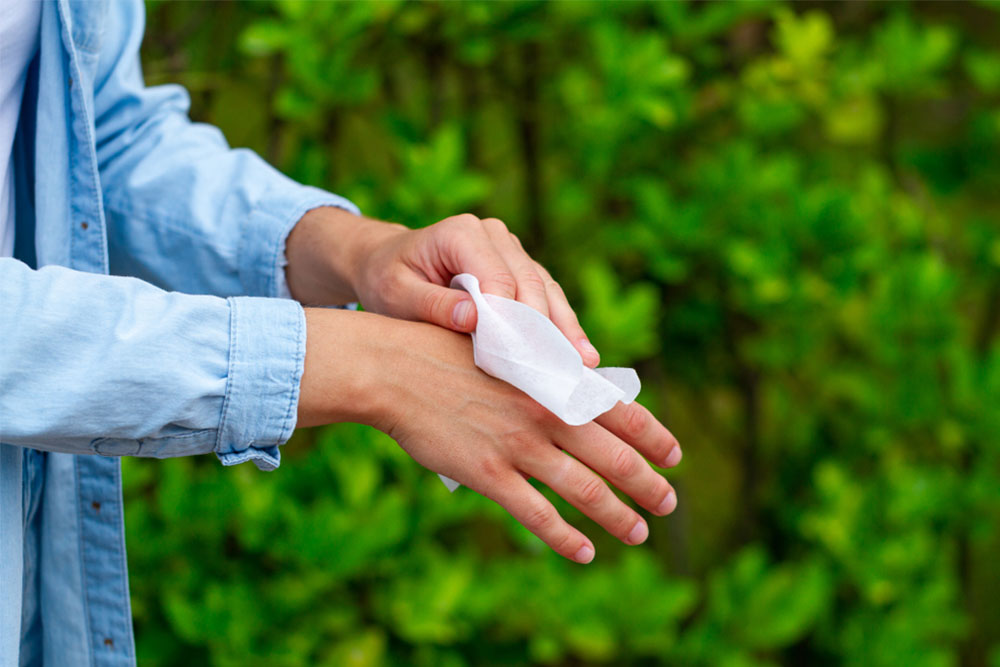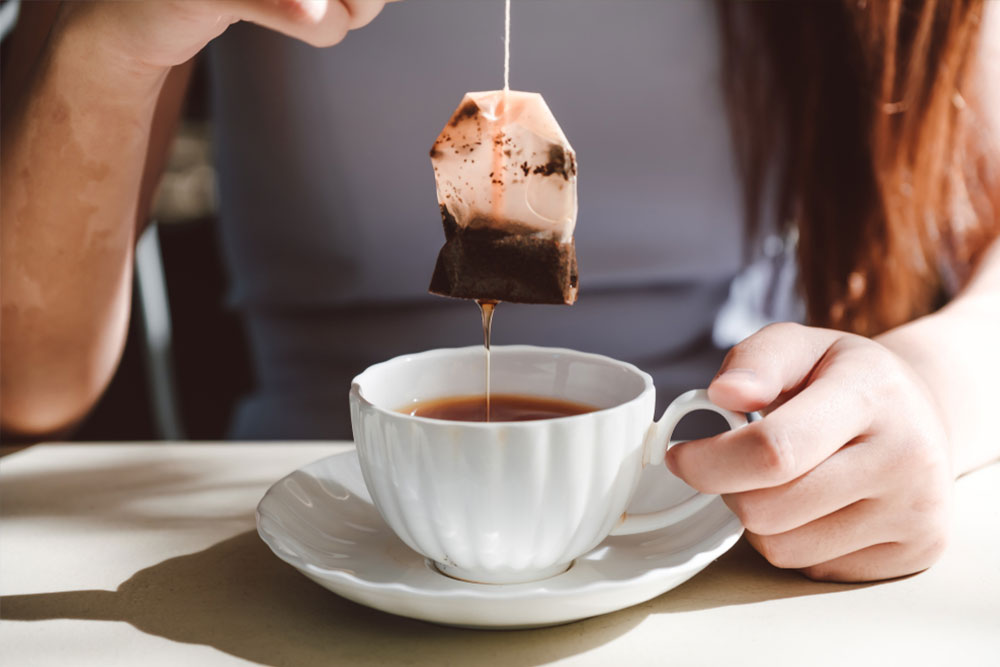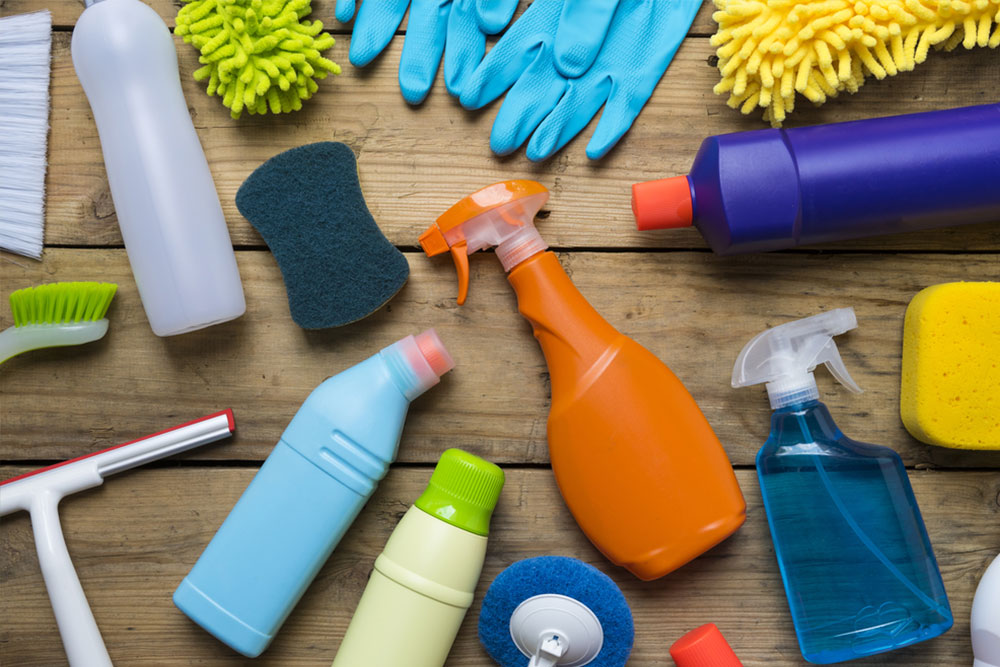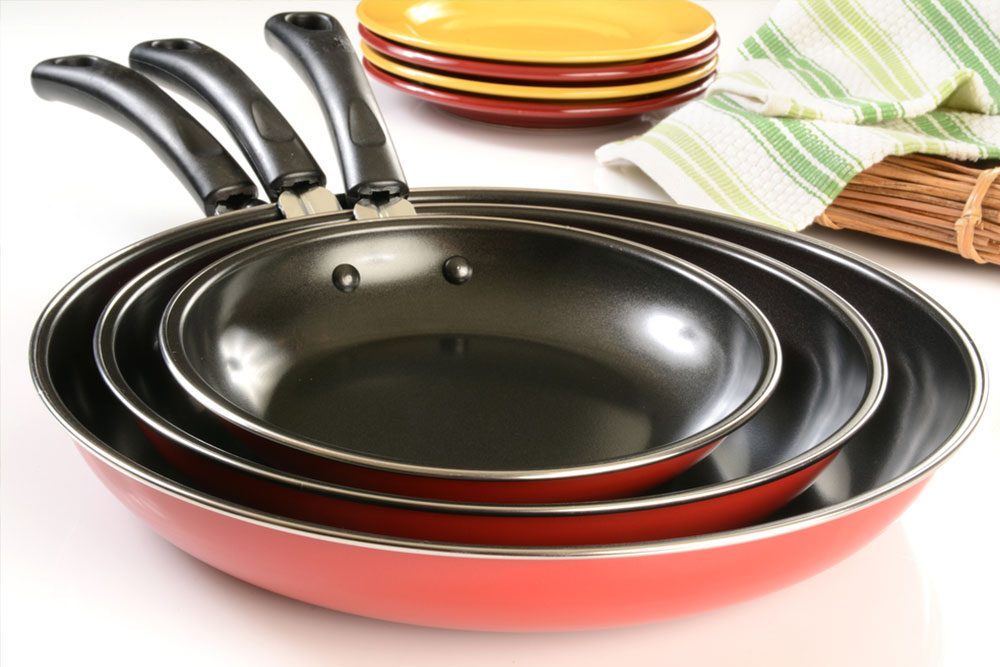You are a part of nature, and so, what you do inevitably affects the ecosystem you live in. This basic fact of life is now quite well known, especially thanks to the deep impact the COVID-19 pandemic has had. A 2020 study titled Challenges, opportunities, and innovations for effective solid waste management during and post COVID-19 pandemic, published in the journal Resources, Conservation & Recycling, explains that even as the nationwide lockdowns last year led to cleaner rivers, cleaner skies and allowed natural life to thrive again in many parts of the world, solid waste management became a nightmare.
The study explains that the pandemic altered waste generation dynamics to a large extent, and not just due to increased medical or hazardous wastes. With the supply chains of food, groceries and other household essentials being affected, home deliveries led to increased plastic waste. Consumer fears that essentials will become unavailable led to overbuying and stockpiling of all sorts of goods, which eventually also led to increased food and consumer goods waste. So, even as people have become more aware of the urgent need for sustainability, recycling, and protecting the environment, the problem of household waste has only increased.
With homes becoming the centre of our lives, no thanks to the pandemic, it’s now more important than ever to be conscious of what products you are using, how much waste you’re generating, and how much harm your consumerist patterns are doing to the planet. Here are some everyday household items that you may be using, consciously or unconsciously, that are adding to the waste management disaster.
In today's world, the use of unsustainable products has far-reaching consequences for the environment. From single-use plastics to harmful chemicals in everyday items, these products often go unnoticed, but their impact is profound.
Unsustainable products are those that have a detrimental impact on the environment throughout their lifecycle, from production and use to disposal. These products often contribute to environmental degradation, resource depletion, and climate change. Understanding unsustainable product examples and their impact on the environment is crucial for promoting more responsible consumption. Here are some examples and the importance of addressing them:
Single-Use Plastics (e.g., Straws, Bags, Bottles):
Impact: These products contribute to plastic pollution in oceans and landfills, harming wildlife and marine ecosystems.
Importance: Addressing single-use plastics is critical for reducing pollution and conserving natural resources.
Fast Fashion Clothing:
Impact: Fast fashion items are often made from low-quality materials, leading to increased textile waste and pollution from the fashion industry.
Importance: Encouraging sustainable fashion choices can reduce textile waste and promote ethical production practices.
Disposable Electronics (e.g., Smartphones):
Impact: The rapid turnover of electronic devices generates electronic waste (e-waste), leading to toxic substances leaching into the environment.
Importance: Promoting repairability, recycling, and responsible disposal of electronics can reduce e-waste.
Gas-Powered Vehicles:
Impact: Gasoline and diesel vehicles contribute to air pollution, greenhouse gas emissions, and resource depletion.
Importance: Transitioning to electric vehicles and promoting public transportation can reduce the environmental impact of transportation.
Single-Use Batteries:
Impact: Disposable batteries contain hazardous materials that can contaminate soil and groundwater when disposed of improperly.
Importance: Using rechargeable batteries and recycling single-use batteries can reduce environmental harm.
Fast Food Packaging (e.g., Styrofoam Containers):
Impact: Non-biodegradable fast food packaging contributes to litter and can take centuries to break down.
Importance: Encouraging sustainable packaging alternatives and responsible disposal can mitigate this impact.
Chemical Pesticides and Herbicides:
Impact: These products can harm beneficial insects, soil health, and water quality, causing ecological imbalances.
Importance: Promoting organic farming and reduced pesticide use can protect ecosystems and human health.
Non-Recyclable Packaging (e.g., Blister Packs):
Impact: Packaging that is not recyclable increases landfill waste and resource consumption.
Importance: Using eco-friendly packaging materials and recycling solutions can reduce waste.
Overly Packaged Goods:
Impact: Excessive packaging contributes to resource depletion, energy consumption, and landfill waste.
Importance: Advocating for reduced packaging and eco-conscious choices can minimize environmental harm.
Single-Use K-Cups and Coffee Pods:
Impact: These items generate massive waste and are often not recyclable.
Importance: Supporting sustainable coffee options and eco-friendly brewing methods can reduce waste.
The importance of addressing unsustainable products lies in mitigating their environmental impact and promoting responsible consumption. This involves encouraging sustainable alternatives, adopting eco-friendly practices, and raising awareness about the consequences of unsustainable choices. Ultimately, responsible consumption and sustainable product choices are essential for safeguarding the environment and conserving natural resources for future generations.

Packaging material
Whether it’s fruits, vegetables, durable edibles or electronics, décor, sanitation and beauty products, most things you buy online are likely to come in different types of packaging materials. While you may be more concerned about the plastic wrap or bubble-wrap, you should be equally worried about cardboard and paper packages. This is because even biodegradable packaging materials need to go to landfills and composts in your city, which are most likely to be overburdened. So, what’s the best thing you can do to minimise this burden? Simply go for the following options:
• Reduce: Take a closer look at your shopping choices and opt for your needs instead of your wants. Lessen the amount you’re buying, or order everything in one go so that you get one large package (which you could reuse) instead or hundreds of small ones that you’ll need to throw off.
• Reuse: You could easily use cardboard, plastic and even paper packaging material to store household products. For example, that bubble wrap can help keep your glassware safe, while those cardboard boxes can be used to organise and store all sorts of goods.
• Recycle: The internet is packed with easy and brilliant DIY projects that you can take up to recycle packaging material into everything from placeholders and picture frames to lights and showpieces. You could try this, and if you have enough artistic flair, you could even gift or sell these recycled décor pieces!
Toothbrush and toothpaste
There’s no denying that your oral hygiene is very important, but have you ever paused to think how every dental hygiene product you use affects the environment? The toothbrush you use is made of plastic, and so is the toothpaste container, mouthwash container and most dental floss varieties. What’s more, studies—like the one titled Toxicity of fluoride in the journal Archives of Toxicology, 2020—suggest that toothpastes contain chemicals like fluoride and triclosan, which can then contaminate water bodies if waste water isn’t managed properly. These chemicals are known to have a neurotoxic effect on microorganisms and animals living in water, as well as on animals or birds which may consume the same water. The simplest way to counter this cumulative and intense damage to the environment is to replace your plastic and chemical based dental hygiene products with organic ones. For example, go for bamboo toothbrushes, vegan or biodegradable floss, and zero-waste toothpastes and tablet toothpastes.

Wet wipes and tissues
Ask anybody living through hot Indian summers, or a bout of cough and cold—or even someone with a newborn who needs to be cleaned and changed five to six times a day—and you’ll know just how valued wet wipes and tissues are at home. But though these items are convenient and easy to store, they have a heavy toll on the environment. A study published in the journal Water Research in 2020, titled The role of wet wipes and sanitary towels as a source of white microplastic fibres in the marine environment, shows that most commercially available wet wipes are manufactured from polyethylene terephthalate (PET), polypropylene, or a combination of PET and cellulose. Even after being treated at waste water plants, these products leave behind microplastic fibres, which in turn can add to the marine plastic waste crisis and harm the marine ecosystem. Switching to biodegradable wipes and tissues, or better still, going old-school with reusable wipes and washcloths, may help remedy this part of the climate crisis.

Tea bags
A 2019 study published in the journal Environmental Science & Technology, with the self-explanatory title Plastic Teabags Release Billions of Microparticles and Nanoparticles into Tea, shows that every time you steep a tea bag in a cup of boiling water, the plastic tea bag releases approximately 11.6 billion microplastics and 3.1 billion nanoplastics. Consuming that tea can therefore cause toxicity to your body, and worse, when you dispose of the tea bag, it releases the same toxic chemicals into the environment and the food chain. So, while those handy green, black, hibiscus or rooibos tea bags are making your life easier, they are also harming your body and the planet at the same time. How to counter this harm and still enjoy a freshly brewed cuppa? You could go old-school and buy loose tea leaves and a strainer. Or, you could invest in a biodegradable, refillable tea bag if a strainer is not what you want.

Cleaning products
As a study published in the journal Indoor Air in 2019 (tiled From one species to another) suggests, the advent of marketed cleaning products over the last few decades has revolutionised how we keep our immediate surrounding free of unhealthy microbes. And yet, most of us tend to forget that every time we use a disinfectant to clean the bathroom and floor, or a shampoo, soap or gel to clean our hair and body, the chemicals in these products are not only harming us but our surroundings too. When you clean a surface with a disinfectant, the chemical residue it leaves behind can easily enter the food chain. The dirty water you threw away after washing your hair or wiping the floors can enter the ecosystem again through the drainage system, because waste water management is still underdeveloped in India. So, beware of the products you use in your everyday life and opt for chemical-free, organic and biodegradable ones. As for the plastic containers these products come in, go for the reduce, reuse and recycle mantra described before.

Non-stick cookware
Who doesn’t use non-stick pots and pans these days? However, this type of cookware comes with its own hazard for you and the environment. A study published in the journal Environmental Science and Pollution Research in 2017, titled PTFE-coated non-stick cookware and toxicity concerns, explains that the inner side of most non-stick cookware are coated with polytetrafluoroethylene (PTFE) like teflon. These synthetic polymers, when exposed to heat, release a variety of gases and chemicals that can lead to mild to severe toxicity.
But entering the food chain or causing indoor air pollution is not the only harm this type of cookware does, because its manufacturing process also uses more chemicals and releases toxic wastes directly into the environment. Moreover, once the coating gets scrubbed off or damaged, most people tend to throw these pans away and buy another, leading to the continuation of this vicious cycle of toxicity and pollution. How to stop the cycle? Invest in eco-friendly cookware made of cast iron, clay, terracotta or soapstone.
Unsustainable Products: Paper Cups
Single-use paper cups, often lined with plastic, contribute to the growing issue of disposable waste.
Unsustainable Products: Plastic Water Bottles
Plastic water bottles are a major source of plastic pollution, with many ending up in oceans and landfills.
Unsustainable Products: Non-Biodegradable Beauty Products
Non-biodegradable beauty products, such as those with microbeads, can have detrimental effects on aquatic life.
Unsustainable Products: Disposable Cutlery
Single-use disposable cutlery made of plastic is a major contributor to plastic pollution.
Unsustainable Products: Unsustainable Furniture
Furniture made from non-sustainable materials can lead to deforestation and habitat destruction.
Methods to Contribute to Environmental Conservation
Mitigating the impact of unsustainable products involves adopting eco-friendly practices, reducing single-use items, recycling, and choosing sustainable alternatives.
Unsustainable Products: Non-Sustainable Fashion
The fast fashion industry and clothing made from non-sustainable materials contribute to textile waste, water pollution, and unethical labor practices.
Unsustainable Products: Single-Use Plastic Straws
Single-use plastic straws are a major environmental concern due to their impact on marine life, pollution, and the long time it takes for them to decompose.
Unsustainable Products: Disposable Diapers
Disposable diapers take centuries to decompose in landfills, and their production has significant environmental impacts, from resource use to waste generation.
Unsustainable Products: Air Fresheners
Many air fresheners contain harmful chemicals and volatile organic compounds (VOCs) that can harm indoor air quality and pose health risks.
Unsustainable Products: E-Waste
The rapid turnover of electronic devices results in a growing electronic waste problem, with toxic components that can contaminate soil and water.
Unsustainable Products: Fast Food Packaging
The packaging used in the fast-food industry, often made of non-recyclable materials, contributes to the global waste crisis.
Unsustainable Products: Disposable Batteries
Single-use disposable batteries contain toxic chemicals that can seep into landfills, posing risks to the environment and health.
Unsustainable Products: Non-Sustainable Agriculture
Agricultural practices that rely heavily on chemical pesticides, non-organic farming, and overuse of water resources can lead to soil degradation, water pollution, and harm to biodiversity.
Consumer Awareness and Sustainable Choices
Consumers play a vital role in reducing the use of unsustainable products. By staying informed, making conscious choices, and supporting eco-friendly brands, we can collectively make a positive impact on the environment.
Government Initiatives
Governments around the world are implementing policies and regulations to encourage sustainable practices and discourage the use of unsustainable products. These initiatives aim to reduce environmental harm and promote responsible consumption.
Collaboration and Global Efforts
Addressing the issue of unsustainable products requires global collaboration. International organizations, environmental agencies, and collaborations between nations play a vital role in raising awareness and implementing sustainable practices.
Education and Advocacy
Educational campaigns and advocacy efforts help in spreading awareness about the impact of unsustainable products. By educating the public and advocating for eco-friendly practices, we can drive change.
Conclusion
In conclusion, recognizing and addressing unsustainable product examples and their impact on the environment is of paramount importance in our quest for a more sustainable and eco-friendly future. Unsustainable products contribute to environmental degradation, resource depletion, and climate change. By understanding their consequences, we can take meaningful steps to reduce their harmful effects.
It is crucial to advocate for and embrace sustainable alternatives, eco-conscious practices, and responsible consumption. This includes reducing single-use plastics, supporting sustainable fashion, recycling electronics, transitioning to electric vehicles, and minimizing chemical pesticide use, among other actions.
Promoting awareness and education about the environmental consequences of unsustainable products is key to encouraging positive change. Individuals, businesses, and governments all play a role in making sustainable choices and adopting eco-friendly practices.
In the pursuit of a healthier planet, addressing unsustainable products and embracing sustainability as a way of life is not just a choice but a necessity. It is a collective responsibility to protect the environment, conserve natural resources, and ensure a better future for generations to come.
FAQs
1.What makes a product unsustainable?
A-Unsustainable products are those that harm the environment due to factors like excessive waste, pollution, non-biodegradability, and harmful chemicals.
2.Why should I be concerned about unsustainable products?
A-Unsustainable products contribute to pollution, resource depletion, and harm to ecosystems. Being mindful of their impact helps protect the environment.
3.What are some eco-friendly alternatives to unsustainable products?
A-Eco-friendly alternatives include reusable items, products made from sustainable materials, and those that use fewer harmful chemicals.
4.How can I reduce my use of unsustainable products?
A-You can reduce your use of unsustainable products by being aware of your choices, choosing eco-friendly alternatives, and practicing responsible consumption.
5.What are the environmental consequences of fast fashion and non-sustainable clothing?
A-Fast fashion and non-sustainable clothing production lead to textile waste, water pollution, and contribute to carbon emissions due to frequent replacement of clothing.
6.How can I make sustainable choices in my daily life?
A-You can make sustainable choices by reducing single-use items, choosing eco-friendly products, recycling, conserving energy, and supporting sustainable brands.
7.What is the role of government regulations in reducing unsustainable product usage?
A-Government regulations often ban or restrict the production and use of unsustainable products, promoting eco-friendly alternatives and encouraging responsible consumer behavior.
8.How can I get involved in environmental advocacy to address unsustainable products?
A-You can get involved in environmental advocacy by supporting organizations and initiatives focused on sustainability, participating in clean-up activities, and spreading awareness about eco-friendly practices.